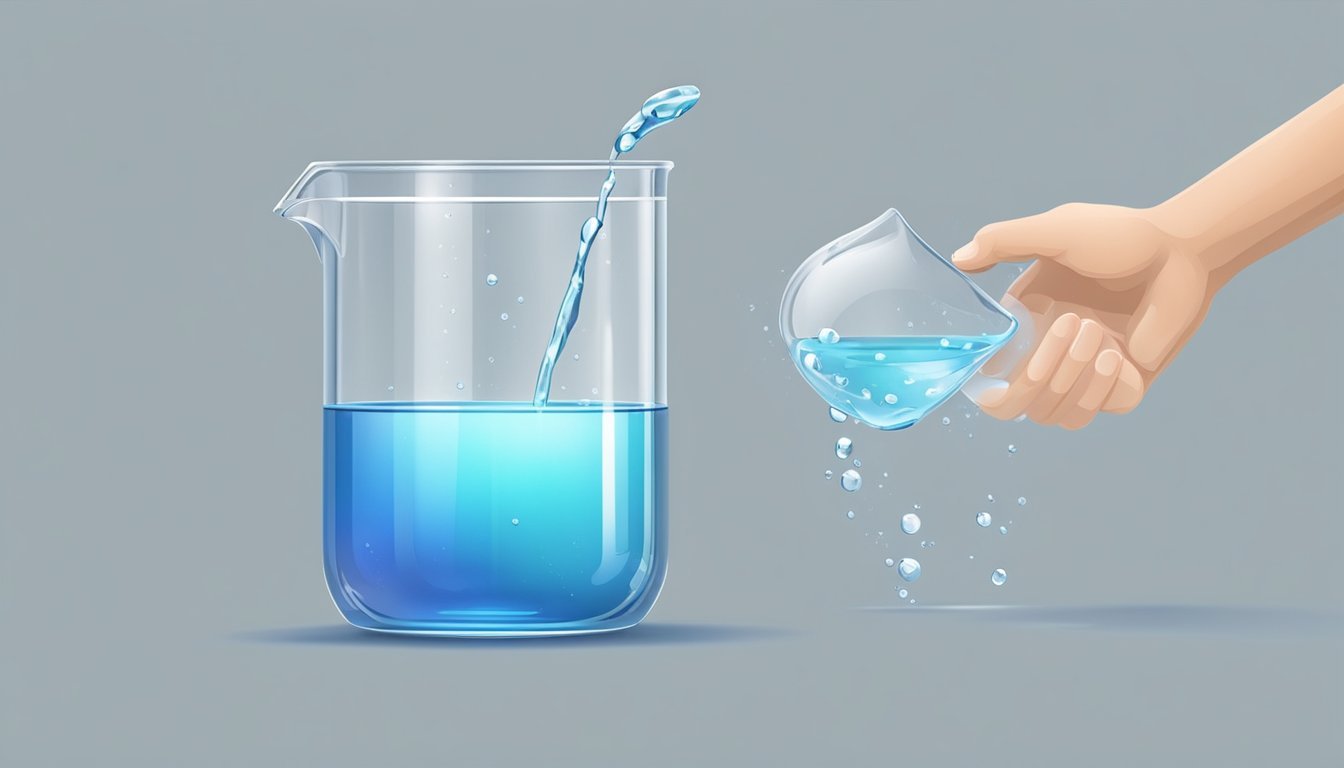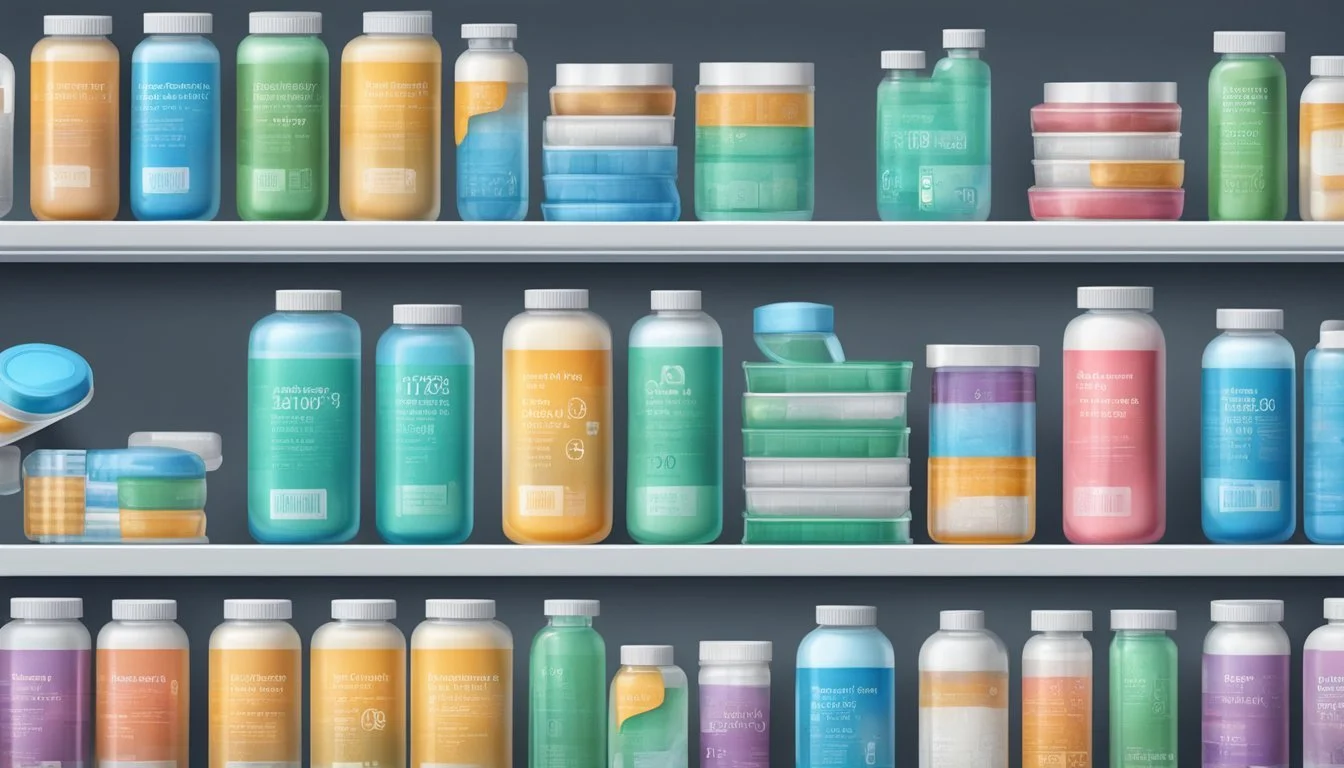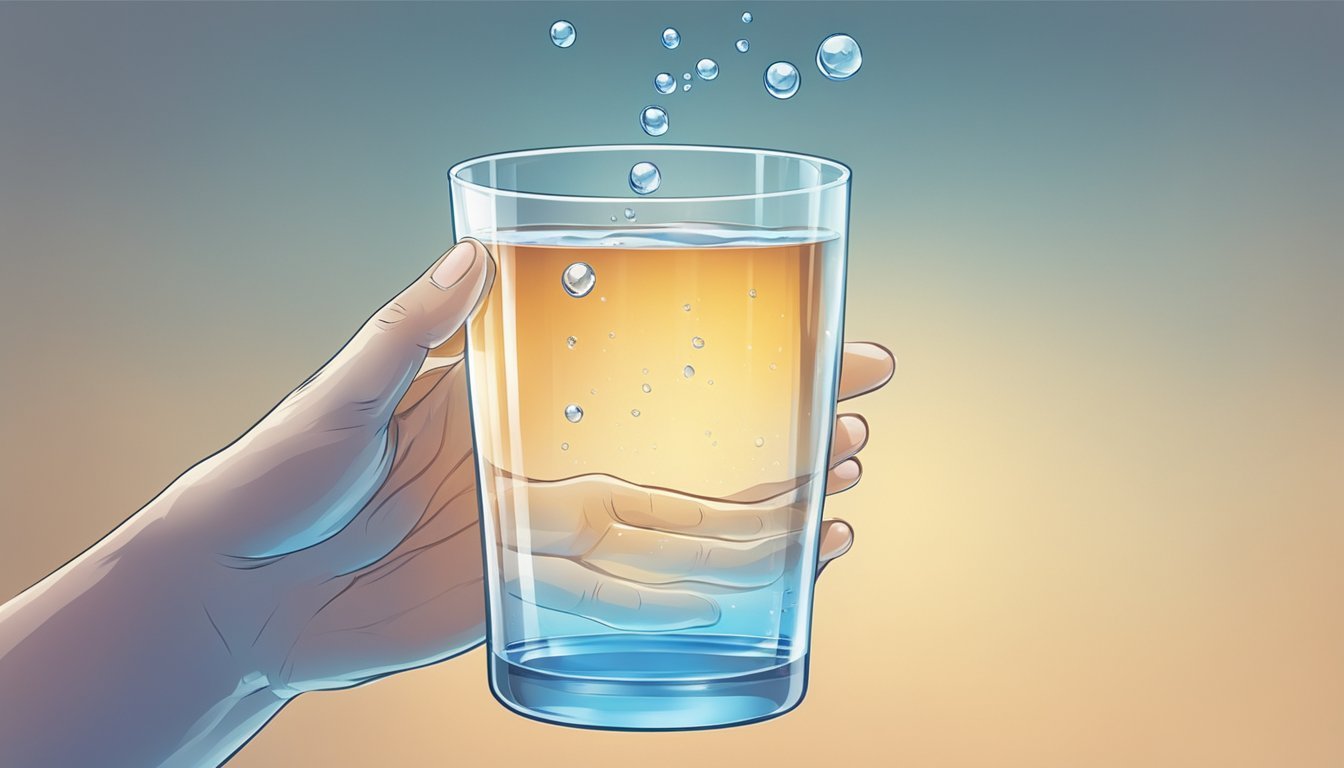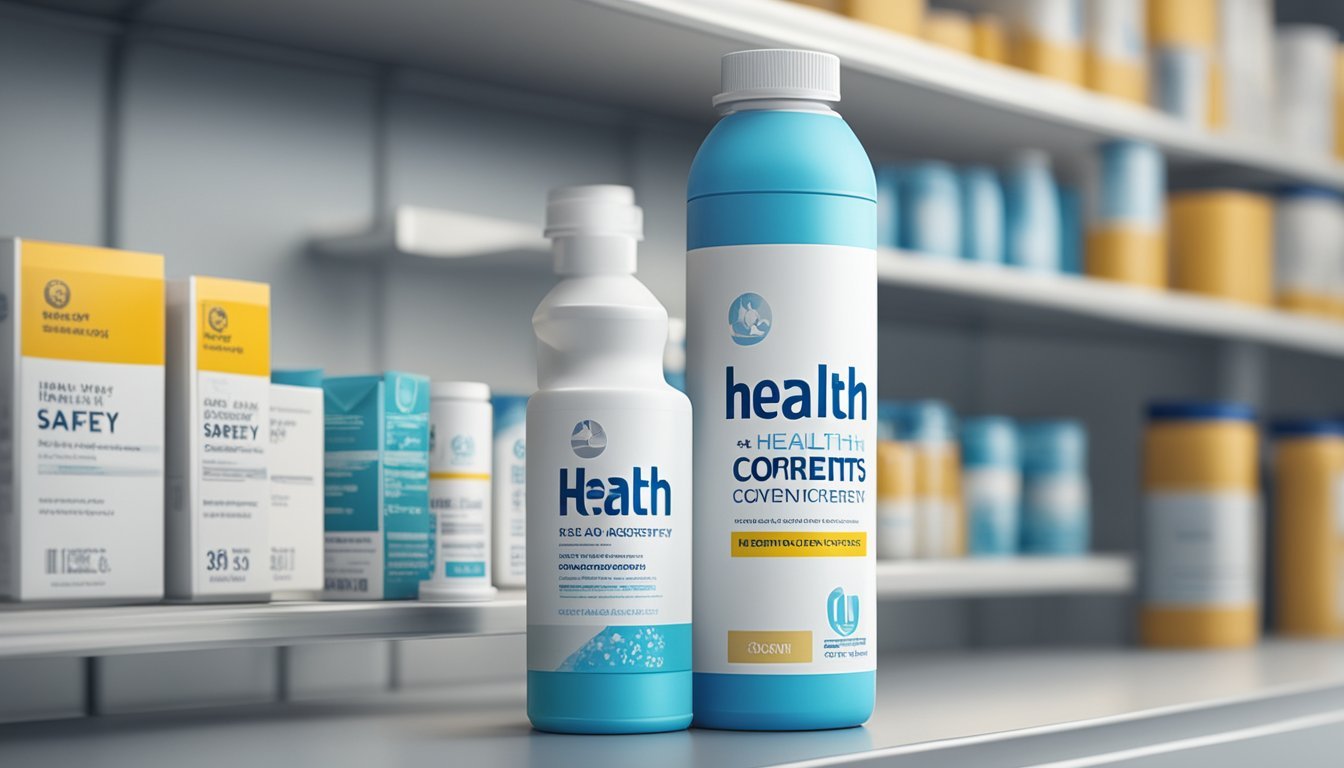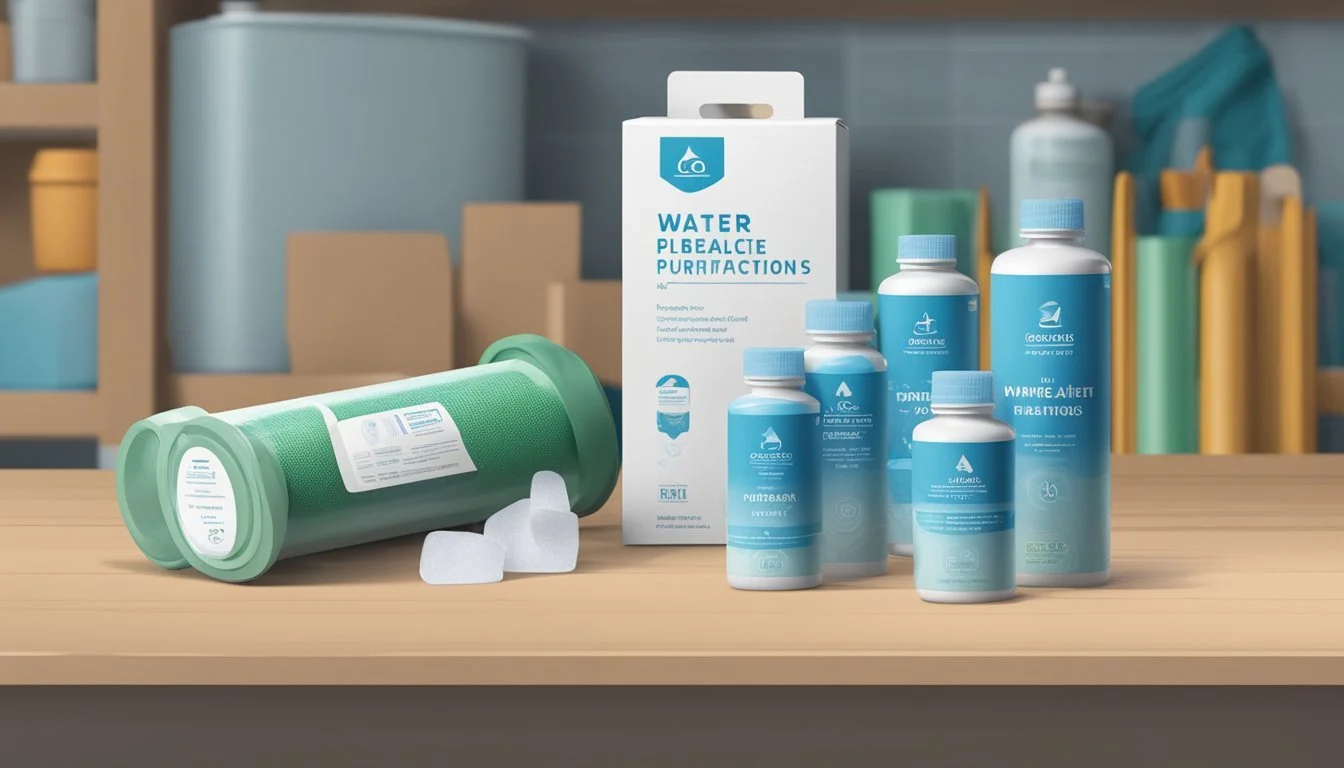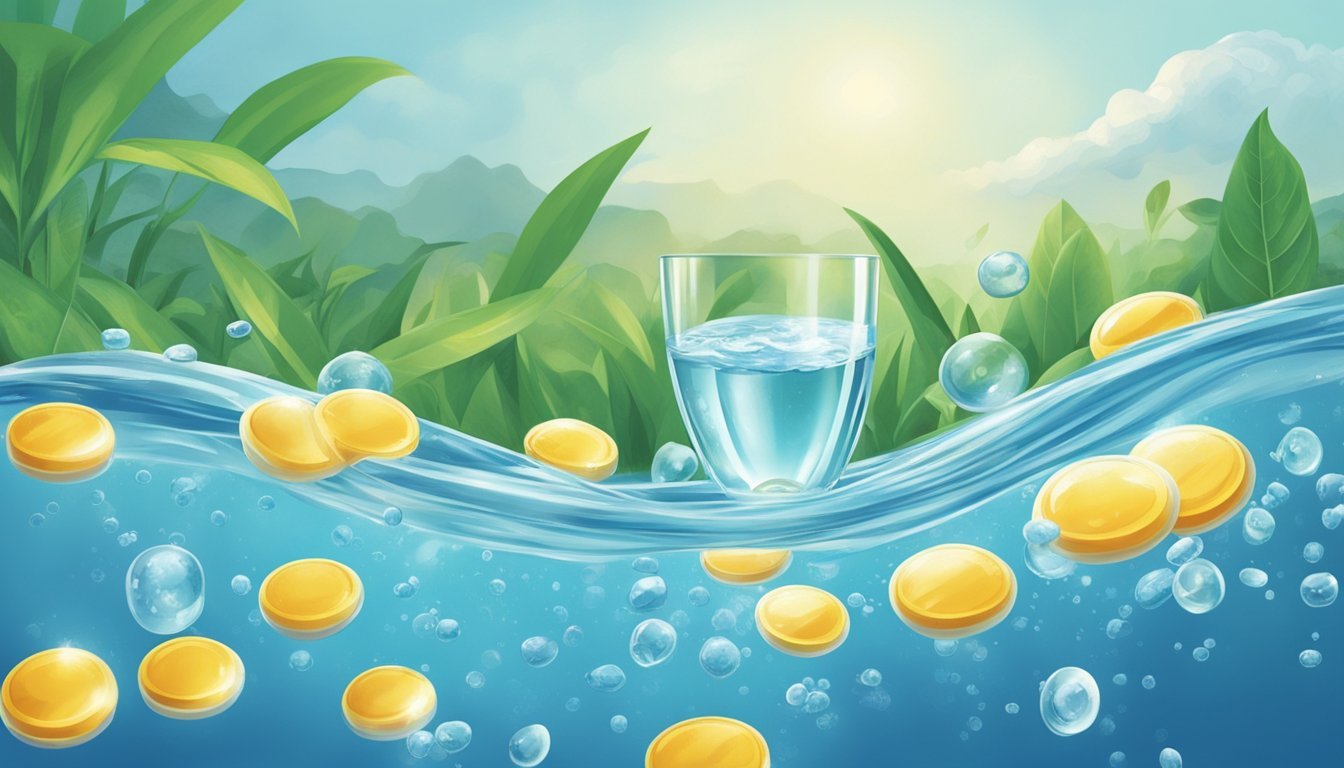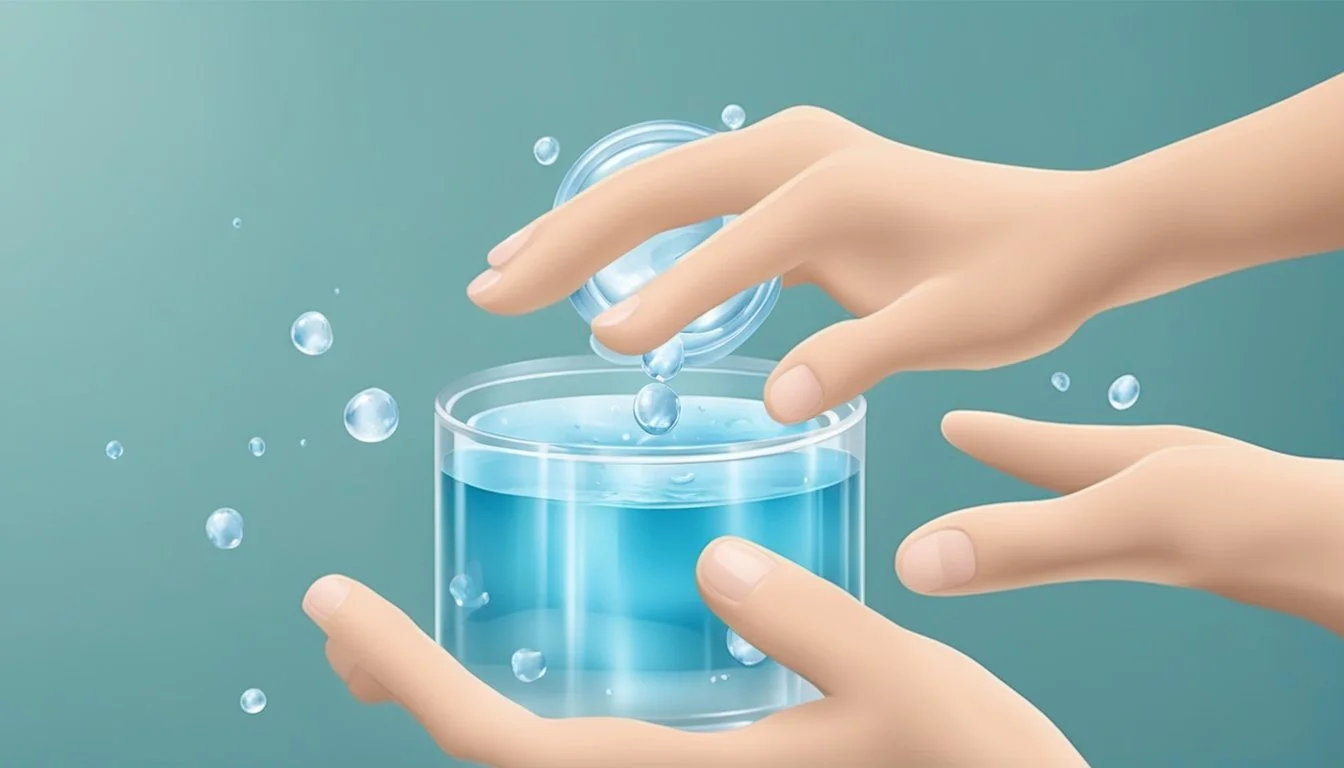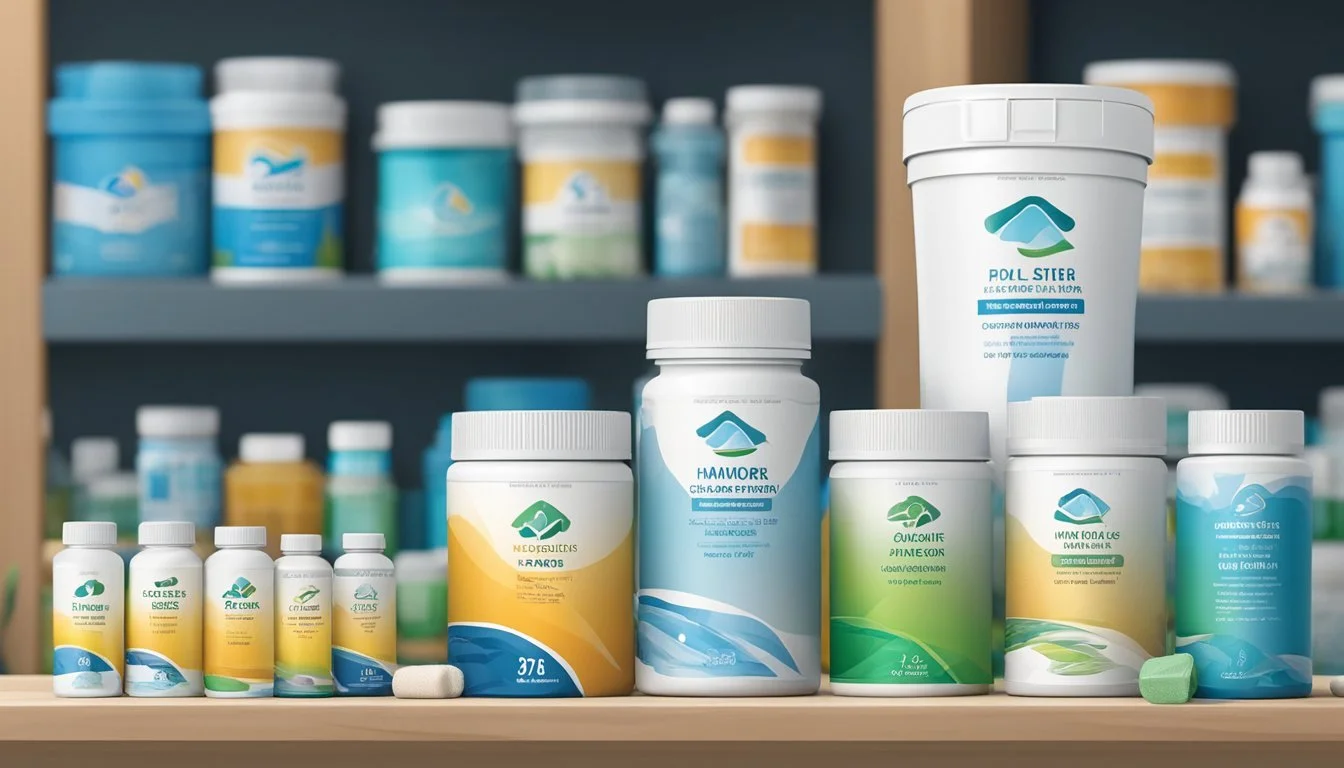How Long Do Water Purification Tablets Last?
Shelf Life and Effectiveness Explained
Water purification tablets are a popular choice for travelers, hikers, and emergency kits due to their portability and effectiveness in making water safe for drinking. They serve as a chemical treatment method to kill pathogens and other harmful microorganisms in the water. The shelf life of these tablets is an important factor to consider, as it determines how long they can be stored before they lose efficacy.
The longevity of water purification tablets varies depending on their chemical composition and the brand. Commonly used brands, such as Aquatabs and Katadyn, specify an expiration period typically ranging from 3 to 5 years. However, some types of tablets, like those containing silver or iodine, can have a shelf life extending up to 10 years if stored properly and remain unopened.
Users should adhere to the expiration dates provided by manufacturers to ensure water safety. The active ingredients in these tablets, including chlorine, chlorine dioxide, iodine, and sodium dichloroisocyanurate (NaDCC), degrade over time, which can diminish their effectiveness. Therefore, regularly checking and replacing tablets as needed is crucial to maintain a reliable supply of safe drinking water in varying situations.
Overview of Water Purification Tablets
Water purification tablets offer a convenient and portable solution for making water safe to drink by inactivating pathogens that cause disease.
What Are Water Purification Tablets
Water purification tablets are small, portable, and lightweight, designed to disinfect and purify water. They are commonly used in emergency situations, during outdoor activities like camping and hiking, or in regions where the water supply may be compromised.
Common Types of Purification Tablets
Typically, there are three primary types of water purification tablets:
Iodine Tablets: Effective against most viruses and bacteria, these tablets have a shorter shelf life and can leave an aftertaste in the water.
Chlorine Tablets: Similar to iodine, chlorine tablets are effective at water purification but can also affect the taste of the water treated.
Chlorine Dioxide Tablets: They provide a balance by being effective against a range of pathogens without the strong aftertaste of iodine or chlorine.
Active Ingredients in Purification Tablets
The efficacy of water purification tablets is largely dependent on their active ingredients, which include:
Iodine: Known to be effective against various microorganisms but may not be as effective against Cryptosporidium.
Chlorine: A common disinfectant used worldwide, its effectiveness can vary based on the presence of organic matter.
Chlorine Dioxide: Highly effective against a wide spectrum of pathogens, including bacteria, viruses, and cysts like Giardia and Cryptosporidium.
Shelf Life Fundamentals
When considering the use of water purification tablets, it is crucial for consumers to understand their shelf life to ensure effectiveness.
Definition of Expiration Date
The expiration date on water purification tablets indicates the point up to which the manufacturer guarantees maximum effectiveness. After this date, the active ingredients may degrade, reducing the tablets' ability to effectively purify water. It is not advisable to use water purification tablets past their expiration date.
Factors Affecting Tablet Shelf Life
Several factors influence the shelf life of water purification tablets:
Storage Conditions: To maximize shelf life, tablets should be kept in cool, dry places away from direct sunlight.
Temperature and Humidity: Extremes in temperature and high humidity can accelerate the degradation process.
Sealed Packaging: Tablets should remain in their original, airtight container until use to prevent exposure to environmental factors.
Integrity of the Container: Once the seal is broken, shelf life may decrease. Keeping tablets in an airtight container after opening can help to extend usability within the expiration period.
Using Water Purification Tablets
Water purification tablets are a convenient solution for treating water to make it safe to drink. They are specifically designed to kill pathogens that can cause illness.
Purifying Process
Water purification tablets use chemicals such as chlorine, chlorine dioxide, or iodine to kill bacteria, viruses, and cysts in contaminated water. When a tablet is added to water, it dissolves and disinfects the water. The time it takes to purify depends on the product used, typically ranging from 30 minutes to 4 hours.
To purify 1 liter of water using Aquatabs, it requires 1 tablet and at least 30 minutes.
Katadyn Micropur tablets take approximately 4 hours to complete the purification process.
Instruction for Use
Manufacturers provide specific guidelines for the correct usage of water purification tablets. Users must follow these directions to ensure safety and effectiveness.
Clear water should be used whenever possible. If the water is cloudy, it's recommended to pre-filter the water.
Dissolve the recommended number of tablets in water, ensuring it is mixed thoroughly.
Wait for the specified time before drinking the water.
Chlorine dioxide tablets generally require a 4-hour wait time to be effective against Cryptosporidium.
Iodine tablets may leave an aftertaste; vitamin C or a commercial product can be used to neutralize the flavor after the iodine has worked.
After-Use Considerations
After treating water, one should consider possible aftertastes and the potential health implications of long-term use.
Chlorine-based tablets may leave a slight taste behind, which can typically be removed by letting the treated water sit uncovered for a few hours.
If one experiences an iodine allergy or thyroid conditions, they should consult with a healthcare professional before using iodine-based purification tablets.
Use purified water for drinking, brushing teeth, and cleaning dishes to maintain good health.
Storage and Handling
The longevity and effectiveness of water purification tablets are significantly influenced by how they are stored and handled. Maintaining optimal conditions is critical to prevent the degradation of the tablets' active ingredients.
Proper Storage Practices
Ideal Conditions: For maximum shelf life, water purification tablets should be stored in a cool, dry place away from direct sunlight. It is essential to keep them in a controlled environment where the temperature is stable because fluctuations can accelerate degradation.
Humidity: Low humidity levels are vital as moisture can cause the tablets to deteriorate prematurely.
Air Exposure: Tablets should be kept in airtight containers to minimize exposure to air, which can lead to a reduction in potency.
Sunlight: Storage areas should be shielded from sunlight since UV rays can break down the chemical composition of the tablets.
Effect of Storage on Potency
Improper storage significantly affects the potency of water purification tablets. Elements like moisture and heat can set off a degradation process, diminishing the tablets' ability to effectively purify water. This is due to the active substances in the tablets breaking down, which can compromise their disinfecting properties.
Opened vs. Sealed Packaging
Sealed Packaging:
Shelf Life: Tablets in sealed packaging tend to maintain their efficacy for the duration of the stated shelf life, which can range from 3 to 5 years depending on the brand.
Condition: The integrity of the seal protects against adverse storage conditions, such as moisture and air.
Opened Packaging:
Once opened, the shelf life of water purification tablets can decrease rapidly, sometimes to less than a year.
Tablets should be used promptly after opening, and any remaining tablets should be stored with even greater care to extend their usability.
Health and Safety Concerns
When using water purification tablets, it's essential to understand the potential health hazards and the effectiveness of the tablets against various pathogens to ensure the safety and health of individuals consuming treated water.
Potential Health Hazards
Health hazards related to water purification tablets arise primarily if they are used improperly or after their expiration dates. Expired tablets may be less effective and could leave behind hazardous residuals that could be toxic if ingested in large quantities. It is crucial to follow the manufacturer's guidelines regarding the shelf life of the tablets:
Aquatabs products typically have a shelf life of 3 years.
Katadyn Micropur MP1 tablets last for about 4 years.
Potable Aqua Chlorine Dioxide tablets also last up to 4 years.
Silver-based tablets can last up to 10 years if the container remains unopened and is stored correctly.
Using tablets beyond these time frames may pose health risks due to potential chemical degradation.
Experience the convenience and savings of buying Aquatabs online!
Effectiveness Against Pathogens
Purification tablets are designed to disinfect water and make it safe for drinking by killing harmful pathogens, including bacteria, parasites, and viruses that cause waterborne illnesses. However, not all tablets are equally effective against all types of pathogens. For instance:
Chlorine-based tablets are effective against most bacteria and viruses but might not be as effective against the cysts of Giardia and Cryptosporidium.
Chlorine dioxide tablets are known to be effective against bacteria, viruses, and cysts, making them a robust disinfectant choice for treating waterborne pathogens.
It is paramount that consumers use the tablets according to the provided instructions to ensure clean and safe water, waiting the necessary amount of time—typically at least 30 minutes—for the tablets to be effective against a broad spectrum of pathogens.
Practical Usage in Various Contexts
Water purification tablets provide a reliable method for treating water, making them essential for emergency preparedness and use in remote locations where the quality of available water is uncertain.
Emergency Preparedness
In emergency situations such as natural disasters, having access to clean water becomes a crucial concern. Individuals should include water purification tablets in their emergency kits to treat potentially contaminated water. The shelf-life of these tablets generally extends for about 3 to 5 years unopened, with brands like Aquatabs and Potable Aqua often lasting up to 4 years. Once an emergency arises, these tablets can make water from doubtful sources safe to drink.
Backcountry and Travel Use
Backpackers and travelers venturing into the backcountry or to regions with unreliable water sources can rely on water purification tablets as a lightweight and compact solution. For example, a single tablet can quickly disinfect water from a mountain stream, rendering it safe for hydration and cooking. It is vital for these individuals to check the expiration dates of their tablets before use, as effectiveness decreases past expiry, possibly impacting their health during travel.
Comparing Water Purification Methods
Choosing the right water purification method can greatly impact one's health and convenience, especially in outdoor settings. When comparing water purification tablets to filters, or chemical procedures to boiling, it's essential to consider factors like effectiveness, treatment time, and portability.
Tablets vs. Filters
Water purification tablets are compact and lightweight, making them ideal for backpackers and emergency kits. They typically contain chemicals like chlorine dioxide or iodine to deactivate pathogens in the water. Filters, on the other hand, physically remove contaminants through a medium, which can be a ceramic, fiber, or other membrane. Filters usually address a broader spectrum of water quality issues, including sediment and sometimes chemical contaminants like pesticides.
Pros of Tablets:
Ease of use: Simply drop into water and wait.
Long shelf life: Varies from 3-5 years.
Lightweight and highly portable.
Cons of Tablets:
Wait time: It can take 30 minutes to 4 hours for the water to be safe.
Chemical taste can be left in the water.
Less effective on turbid or very cold water.
Pros of Filters:
Immediate results: No extended wait time.
Multiple uses: Good for repeated use on multi-day trips.
Can improve clarity and taste of water.
Cons of Filters:
Bulkier: Takes up more space in a pack.
Maintenance: Requires cleaning and can clog.
Limited lifespan: Filters require replacement after filtering a certain volume of water.
Chemical vs. Boiling
Comparing chemical treatments, such as water purification tablets, to boiling, one must consider the differences in treatment effectiveness and convenience. Chemical treatments can inactivate most viruses, bacteria, and protozoa, whereas boiling water is effective in killing all types of pathogens, including those resistant to chemicals.
Pros of Chemical Treatments:
Portability: Easy to carry and no need for a heat source.
Effective against many pathogens, when used correctly.
Cons of Chemical Treatments:
Contact time: Requires waiting for the chemicals to work.
Taste alteration: Can leave a residual chemical taste.
Pros of Boiling:
Efficacy: Kills all microorganisms with sufficient heat and time.
Simplicity: No special equipment besides a heat source and container.
Cons of Boiling:
Time and fuel consuming: Needs time to boil and cool down.
Impractical for large quantities: Difficult to boil water for large groups or for extended periods.
By considering the specifics of each method, such as treatment times and their ability to handle various contaminants, one can make informed decisions regarding water treatment in different situations.
Understanding Expiration and Replacement
In handling water purification tablets, understanding when they expire and when to replace them is crucial for maintaining their effectiveness in making water safe to drink.
Indicators of Expiration
Expiration dates on water purification tablets indicate the period within which the manufacturer guarantees their maximum efficacy. Aquatabs tablets, for instance, typically have a shelf life of 3 years. Katadyn Micropur MP1 and Potable Aqua Chlorine Dioxide tablets usually last about 4 years. After the expiration date, the active ingredients may deteriorate, making the tablets less effective.
Aquatabs: 3 years
Katadyn Micropur MP1: 4 years
Potable Aqua Chlorine Dioxide: 4 years
It is important to regularly inspect the packaging for any signs of damage or breach, which can also compromise the tablet's efficacy prior to the stated expiry date.
When to Replace Tablets
Water purification tablets should be replaced after reaching their expiration date or if there are signs of the packaging being compromised. Even a few months beyond the expiry could result in a discernible reduction in effectiveness, potentially affecting the safety of the treated water. For those planning outdoor activities or emergency preparedness, one should ensure that their supply is within the shelf life period to guarantee water safety.
Replace after reaching expiration date
Replace if packaging is compromised
In some cases, longer-lasting options such as certain silver water purification tablets might offer extended shelf lives of up to 5 or 10 years, but regardless, it is always recommended to adhere strictly to the expiration dates provided by the manufacturer for optimal safety.
Brand-Specific Information
When it comes to the longevity of water purification tablets, each brand offers a different shelf life that is largely influenced by the composition and packaging of the tablets.
Popular Brands and Differences
Aquatabs:
Aquatabs 1000 Tablets: 3 years
Aquatabs Food-Safe Tablets: 3 years
Aquatabs Multipurpose Tablets: 3 years
Katadyn:
Katadyn Micropur MP1 Tablets: 4 years
Potable Aqua:
Potable Aqua Chlorine Dioxide: 4 years
Aquamira: Typically have a shelf life nearing 4 years.
Oasis: Often guarantee about 2-3 years of effective use from the date of manufacturing.
Coleman: Known for a shelf life similar to Oasis, with around 3 years before expiration.
Polar Pure: Can last considerably longer, with some reports indicating that it remains effective for several years when stored properly.
The active ingredients and the type of technology used in water purification will influence the product's effective lifespan. For instance, tablets containing chlorine dioxide, such as those from Katadyn and Potable Aqua, will have different expiration parameters compared to iodine-based options.
When it comes to Potable Aqua online shopping is the way to go!
Customer Reviews and Feedback
Katadyn Micropur MP1:
Pros: Praised for their ease of use and the 4-year shelf life.
Cons: Feedback indicates a higher cost can be a concern for some users.
Aquatabs:
Pros: Commonly highlighted for being cost-effective and having a good shelf life.
Cons: Some reviews mention a slight taste to the water post-treatment.
Potable Aqua:
Pros: Well-received for their effectiveness.
Cons: The taste of the water is sometimes noted as an issue.
Aquamira:
Pros: Users generally find the water to be of better taste post-treatment.
Cons: There is less information on longevity after opening the packaging.
Customers rely on these products for safe drinking water in various scenarios, from camping and hiking to emergency preparedness. They often provide feedback on efficaciousness, ease of use, and the presence of aftertastes, with an overarching consensus that following the manufacturer's guidelines on expiration is critical for safety.
Online stores offer unbeatable prices for Katadyn Micropur MP1 so don't miss out!
Additional Considerations
When considering water purification tablets, it is important to factor in not just their shelf life but also their potential effects on taste and aftertaste, any changes in water color, and their environmental footprint.
Taste and Aftertaste
Water purification tablets can alter the taste and aftertaste of the treated water. Chlorine-based tablets, for instance, may impart a noticeable chlorine flavor, which some users may find unpalatable. Tablets containing iodine can leave a similarly distinct taste and aftertaste, which can often be neutralized with a second neutralizing tablet or by letting the water stand with an open lid for an extended period.
Water Discoloration
The use of certain water purification tablets may result in water discoloration. For example, iodine has the potential to give water a light brown tint. While this change in color does not indicate a reduction in safety, it may be off-putting to some users. It is also worth noting that starting with clearer water can minimize discoloration.
Environmental Impact
The environmental impact of these tablets should be considered. Most active ingredients in water purification tablets are intended to break down into harmless substances with time, but indiscriminate or frequent use in natural water bodies can still contribute to ecological changes. Additionally, the packaging and disposal of expired tablets need to be managed responsibly to mitigate environmental harm.
Regulatory and Industry Guidelines
In the context of water purification tablets, both the Environmental Protection Agency (EPA) and international entities establish guidelines and standards that manufacturers must adhere to, ensuring product efficacy and safety for consumers.
EPA Guidelines
The Environmental Protection Agency (EPA) regulates water purification tablets under the Federal Insecticide, Fungicide, and Rodenticide Act (FIFRA). These tablets are considered pesticides, as they disinfect water. The EPA's guidelines specify registration requirements for manufacturers, dictating how these products can be marketed and their labeling claims. The agency enforces:
Efficacy requirements: to confirm that the tablets eliminate specific pathogens.
Stability standards: how long the tablets remain effective, which is reflected in the product's expiration date.
International Standards
Internationally, standards such as those issued by the World Health Organization (WHO) play a significant role. These standards stipulate requirements for safe drinking water and are often adopted by manufacturers globally. They may include:
Concentration limits of active ingredients to prevent adverse health effects.
Usage instructions that align with global health objectives for safe water.
Industry standards also often reference international guidelines to harmonize safety and effectiveness across markets.
Advanced Topics
In exploring the longevity and efficacy of water purification tablets, two critical aspects warrant focused discussion: the chemical make-up and the ongoing research that drives innovation.
Chemical Makeup and Reactions
Water purification tablets primarily depend on their chemical makeup to deactivate pathogens in water. The active ingredients commonly found in these tablets include iodine-based compounds like tetraglycine hydroperiodide, chlorine-based agents such as sodium dichloroisocyanurate, and even metallic elements like silver. Each ingredient reacts differently once dissolved in water, targeting microorganisms through oxidation or other molecular interactions.
Iodine-based tablets, containing tetraglycine hydroperiodide, target bacterial and viral threats by penetrating cell walls and disrupting internal structures. The effective pH range for these types of tablets is critical, and they tend to have a shelf life of approximately six years.
On the other hand, chlorine-based tablets leverage a different reaction pathway, releasing hypochlorous acid in the water, which has strong disinfectant properties. These are typically stable for about five years, depending on storage conditions.
Research and Innovation
Research in the water purification field is dynamic, with ongoing innovation aiming to improve the efficacy and safety of purification tablets. This research spans new chemical makeup strategies and the implementation of advanced materials that could extend the shelf life and effectiveness of these tablets.
Notably, new formulations are being explored that minimize harmful by-products and improve taste, while silver-infused purification options promise longevity—some up to ten years—and enhanced antimicrobial activity. The innovation in tablet composition is a direct response to the growing demand for safe drinking water in diverse conditions, from outdoor recreation to disaster relief efforts.
Conclusion
When considering the shelf life of water purification tablets, one should note the type and brand of the tablet as these factors significantly dictate their expiration period. Aquatabs, a common brand, typically retain their effectiveness for 3 years. Katadyn Micropur MP1 and Potable Aqua Chlorine Dioxide water purification tablets have a slightly longer lifespan of 4 years.
It is generally understood that most water purification tablets have expiration dates ranging from 3 to 5 years. However, some types, such as those containing silver, boast a longer shelf life—up to 10 years if the container remains unopened.
Brand Expiry Aquatabs (Various Types) 3 years Katadyn Micropur MP1 4 years Potable Aqua Chlorine Dioxide 4 years Katadyn Micropur Forte MF 1T (Silver) 5 years Non-specified silver tablets 10 years
Expiration dates are crucial for ensuring the effectiveness of the tablets, hence relying on expired tablets risks the safety of one's drinking water. Manufacturers' recommendations and expiration dates should always be adhered to, to ensure the tablets perform their intended function. Users should monitor the storage conditions and replace the tablets as necessary, thereby maintaining a reliable supply of potable water during outdoor activities or emergencies.


